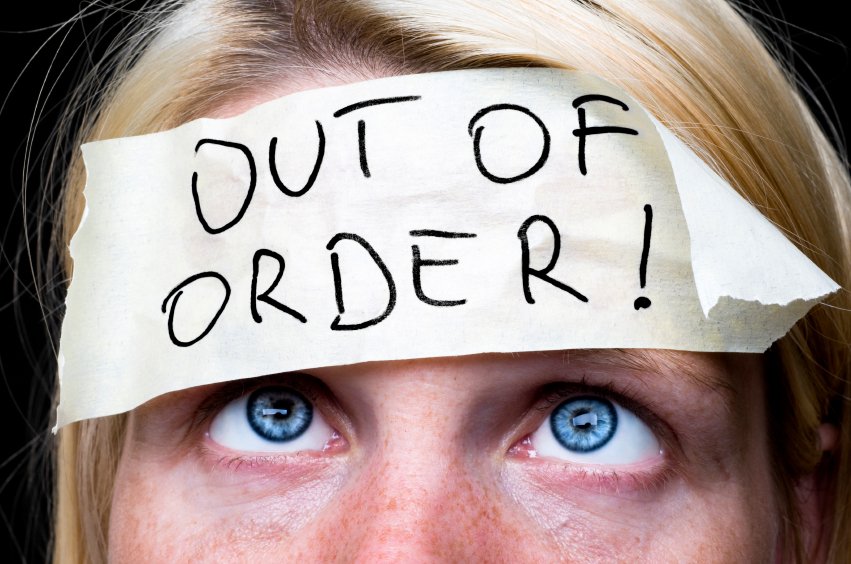
Humans made it through the survival gauntlet of evolution because of our legendary adaptability. Cold, heat, bad food—we adjusted and kept on ticking. Yet adaptability is a habit that can threaten your survival—and the productivity, decision-making, and bottom line of your organization when it comes to stress.
At first, you might feel the churning stomach or the headaches of a stressor overloading coping ability. Then the body gets used to it. The adrenaline set off by the stress response to help you fight or run from danger masks the fact that your body is going down in any number of ways—heart disease, diabetes, irritable bowel. Your team or department also gets used to the stress and adapts to it.
The adrenaline set off by the stress response makes you think you are handling it, but it’s an illusion. Stress is eating away at your health, suppressing your immune system, increasing the bad cholesterol, decreasing the good cholesterol and providing a false sense of energy and transcendence. Chronic stress can lead to stroke, depression, and burnout, the last stage of stress and a three-way shutdown of mind, body, and emotions.
STRESS KILLS
Stress is nothing to mess around with. It’s a factor in five out of the six leading causes of death and some estimates have it as an element in more than 75% of doctor visits.
Stress is a killer. At one workshop I led for a large consulting firm, I learned that one of their top consultants, in his forties, had a heart attack on a bathroom floor while on assignment. He was known as someone who would go to the wall on every job. At a federal agency, managers told me about hospitalizations and nervous breakdowns because of stress. One entrepreneur I spoke with had a heart attack at the age of 29 from out-of-control stress.
Of course, all this has a massive impact on productivity, health costs, errors, and absenteeism for organizations. Stress costs U. S. companies $407 billion a year in health bills, absenteeism, lost productivity, and recruiting and training, according to U. C. Irvine stress researcher Peter Schnall.
The havoc doesn’t have to happen. We can manage stress with one simple new habit: regular stress testing. We do eye checkups, mammograms, blood panels, but we are never taught to identify and manage stress. We need to measure stress levels on a regular basis, say experts like Schnall, or we wind up at the mercy of a runaway medical train.
How do you know if you are in the danger zone? There are a number of tests you can do to monitor your stress levels, from saliva to blood and treadmill tests. If you are under a lot of strain, and even if you think you are managing the pressure, you need to make the time to take a stress test. Tom Row, a Tennessee scientist I spoke with, didn’t even know he was stressed when he had a heart attack at his office and was carried out on a stretcher. He’d been doing 12-hour workdays for years.
ASSESS YOUR STRESS
Let’s take a look at some of the main types of stress tests, beginning with cortisol testing. Stress sets off a flood of hormones from your adrenal glands, including adrenaline and cortisol, also known as the stress hormone, to help your body prepare for action to confront danger.
Elevated cortisol levels from stress, though, cause a host of problems, from high blood pressure to heart disease, and can increase the risk of depression. Interestingly, researchers have found that cortisol levels drop in people who have burnout—another reason to do the test. Burnout depletes your adrenal glands of the hormones and energetic resources you need to function. Chronic fatigue and Addison’s disease are marked by low cortisol levels. So cortisol testing can determine both if you have abnormally high levels of the hormone or very low.
- Saliva Test. This may be the simplest stress test, one which checks cortisol levels at various times throughout the day. The process involves leaving your saliva in a test tube-like device and sending it off to a lab for analysis. You can buy saliva test kits over the counter and online. Most experts, though, feel that the saliva test is less accurate than a blood serum test.
- Cortisol Blood Test. We all know the drill here. Needle time. Have your doctor draw blood and submit it to a cortisol analysis. The test will determine whether you have abnormal cortisol levels, high or low. Certain medications can interfere with test results, such as steroid drugs, estrogen, androgens, and anti-seizure drugs. According to the National Institute of Health, the normal values for a test at 8 a.m. are 6 to 23 micrograms per deciliter (mcg/dL).
- Cortisol Urine Test. You can also measure your cortisol levels with a standard urine test. The National Institute of Health reports that the normal range is 10 to 100 micrograms per 24 hours (mcg/24h).
- Cognitive Stress Test. This non-invasive approach can be very helpful in identifying stress and various physical byproducts of strain and high demands. The questionnaire can be used in conjunction with other tests, such as a blood test or blood pressure test to map out the larger picture of demands outstripping coping ability and the effects that is having on your body and thinking.
- Blood Pressure Test. Keeping an eye on blood pressure is an important tool to track the effect of stress on your cardiovascular system. U. C. Irvine’s Schnall says that it’s crucial you get your blood pressure measured, not just at the doctor’s office, but also at work. The true state of elevated blood pressure may not appear in the calm of the doctor’s room. He strongly recommends that you test BP at work to measure how your body is faring in the heat of the workday. According to the American Heart Assoc., Stage 1 Hypertension begins at a systolic number (the top number on your BP reading) of 140-159 or a diastolic number (the lower figure) of 90-99. Hypertension Stage 2 is a systolic of 160 or higher and a diastolic of 100 or higher, while a Hypertension Crisis is higher than 180 for systolic and 110 for diastolic.
- Electrocardiogram Test (EKG). This test can find underlying issues of heart disease and hypertension. Electrodes measure electrical signals in the heart that can find patterns of rhythms and heartbeats that may be a tipoff to problems. The devices have gotten very streamlined and much easier to use, and can spit out results on the spot, so you can get a very quick analysis of your heart health.
- Exercise Stress Test. An EKG, though, may not always be enough. Brian Curin, co-founder of the Flip Flop Shops, can thank the exercise stress test for saving his life. An EKG didn’t catch the massive jam in his arteries. Sometimes known as a treadmill test, the exercise test measures the way your heart responds to physical effort, and the extra demands can ferret out issues other tests can’t. This test pinpointed an array of problems so serious that Curin was advised to go directly into surgery, where he had to have a quadruple bypass at the age of 39. Do yourself a favor, and take the time for your health and get this test done.
Beyond monitoring and testing, if your office or department has a stress problem, don't ignore it. Fix it. Reach out and contact us, and we can show you how a stress management program can give your team tools to control demands, instead of the other way around. Stress is optional.
Click the button below for more details on our stress management programs.














